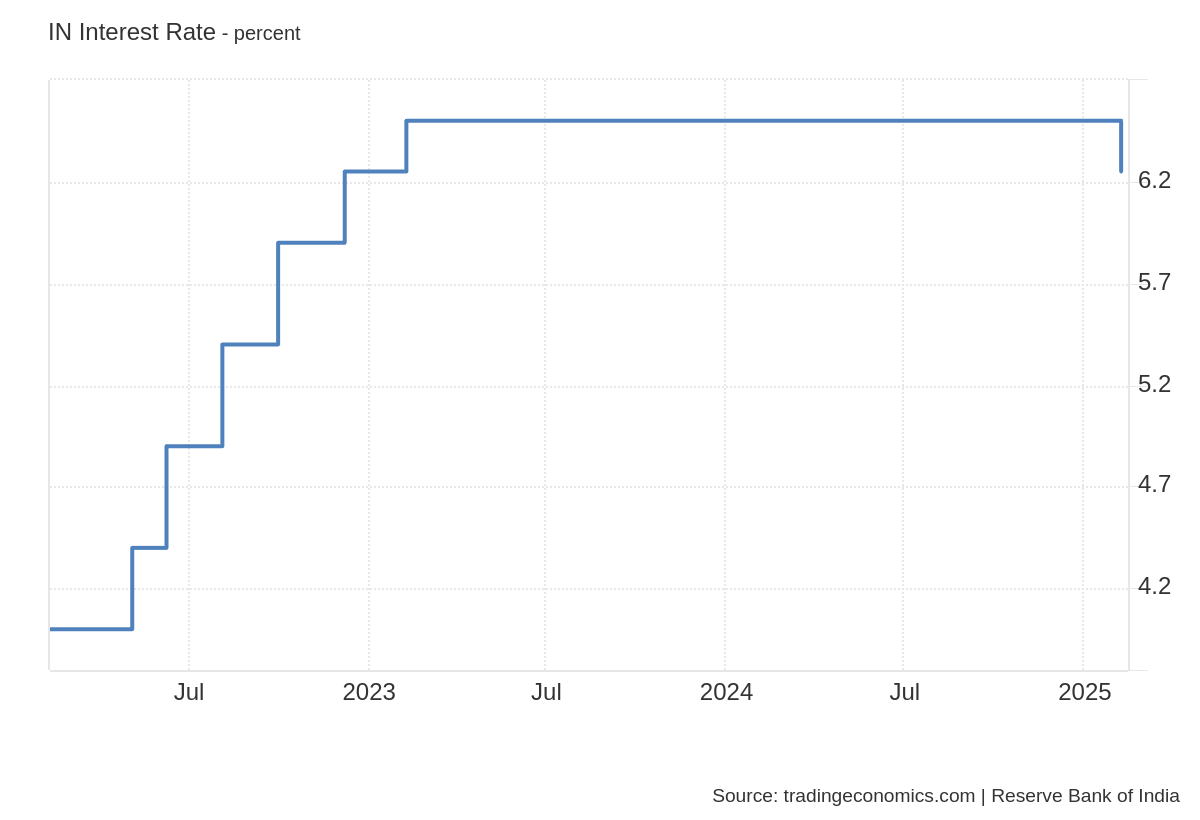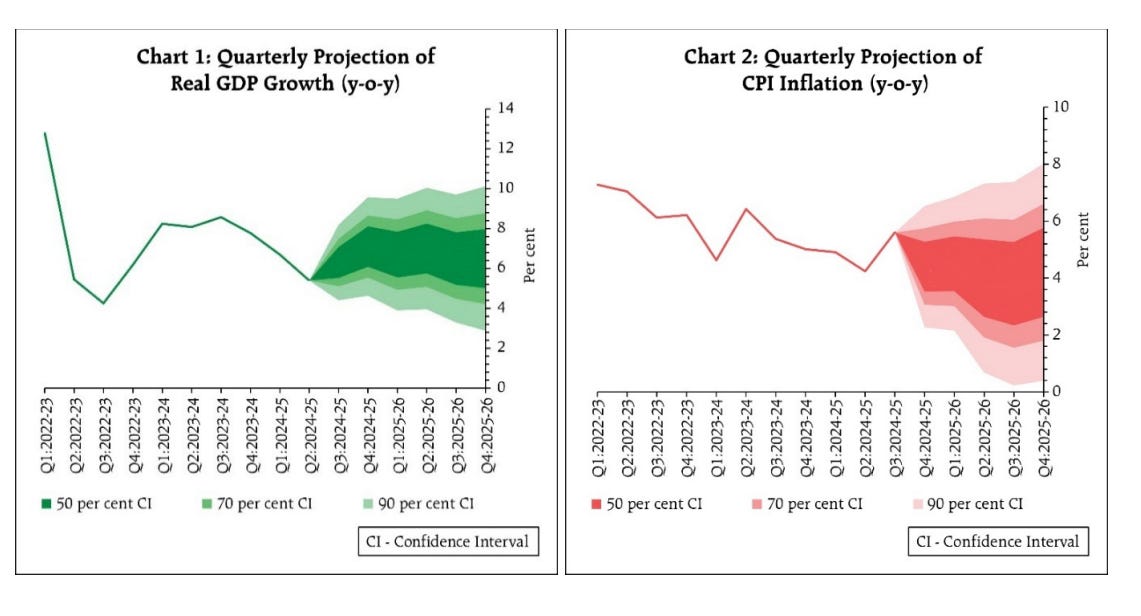Our goal with The Daily Brief is to simplify the biggest stories in the Indian markets and help you understand what they mean. We won’t just tell you what happened, but why and how too. We do this show in both formats: video and audio. This piece curates the stories that we talk about.
You can listen to the podcast on Spotify, Apple Podcasts, or wherever you get your podcasts and videos on YouTube. You can also watch The Daily Brief in Hindi.
In today’s edition of The Daily Brief:
- SEBI Cracks Down on Fake Trading Guru!
- RBI Cuts Rate to 6.25%!
SEBI Cracks Down on Fake Trading Guru!
Today, we’re diving into a massive story that broke just last week—SEBI’s enforcement action against what appears to be one of the largest trading education scams in recent memory.
Let us paint you a picture: Imagine someone claiming to manage ₹283 crores through their “proprietary trading system,” promising guaranteed returns, and teaching people how to make millions in the stock market. Sounds too good to be true, right? Well, that’s exactly what SEBI discovered when it investigated Asmita Patel Global School of Trading Private Limited.
This is a wild story where social media influence meets financial fraud. At the center of it is Asmita Patel, who built a massive social media following—526,000 YouTube subscribers, 290,000 Instagram followers, and a significant presence across other platforms. She claimed to have mentored over 100,000 students worldwide.
The company offered various courses with fancy names like “Master’s in Price Action Trading” (MPAT), “Let’s Make India Trade” (LMIT), and “Options Multiplier.” The flagship MPAT course would cost ₹7 lakhs plus 18% GST, bringing the total to ₹8.26 lakhs.
Now, let us tell you about some of the wild claims SEBI found they were making. During their sessions, they told people they could expect “35 to 40 percent” returns with no problem. They showcased a CA who supposedly went from ₹30 lakhs to ₹12 crores in just a year and a half. They had testimonials of an 18-year-old who allegedly made ₹12 lakhs in profit within just 8-9 months. One of their speakers even claimed to have made a 12% profit in a month without even looking at the market! The most outrageous part? In one session, they actually demonstrated calculations claiming 300% returns.
But here’s the reality SEBI uncovered—while they claimed to manage ₹283 crores through their “proprietary system,” their actual trading turnover was just ₹15.27 crores, with a net profit of only ₹12.28 lakhs. That’s nowhere close to what they were promising people!
Their operation was systematic. First, they would get people into a three-day course called “Let’s Make India Trade” (LMIT). During these sessions, they actively encouraged people to liquidate their mutual funds, sell their gold, or even take loans from friends and family to join their courses. They told people that trading was less risky than running a restaurant!
Once participants joined their main course, they were required to open trading accounts with ABC Limited, where Asmita Patel was an authorized person. They were then added to exclusive Telegram channels—“M16” and “M17 Technical Update”—where specific trading advice was provided.
SEBI found that they maintained tight control through these Telegram channels. They sent detailed Excel worksheets with specific trading parameters, including exact entry prices, stop losses, and precise timing for trades. When stop losses were hit, they immediately provided new trading parameters to their participants. This systematic approach revealed how they were essentially running an unauthorized investment advisory service under the guise of education.
What’s particularly concerning is how they kept people isolated. Course participants were muted during online sessions and prevented from talking to each other. Questions raised by participants were never answered on the chat portal. This systematic isolation stopped people from sharing their experiences or raising collective complaints.
The numbers are staggering. Between 2019 and 2024, they collected over ₹90.49 crores in fees through their company alone. SEBI also found additional fee collection through three other entities—King Traders, Gemini Enterprise, and United Enterprises—bringing the total to over ₹104 crores.
SEBI has now stepped in with serious actions. They have ordered the company to cease and desist from offering unregistered investment advisory services, frozen their assets, and are moving to impound ₹53.67 crores of what they call “ill-gotten gains.” They are also forwarding the case to tax authorities for potential GST and income tax violations.
This case is particularly relevant because it highlights the dangers lurking at the intersection of social media influence and financial education. It serves as a reminder that when someone promises guaranteed returns or claims to have a foolproof system for making money in the markets, it’s best to run the other way.
RBI Cuts Rate to 6.25%!
Today, we’re diving into a significant shift in India’s monetary policy landscape—the RBI’s latest rate decision and what it means for the economy.
Key Rate Decision
The big news today—the RBI has cut the policy repo rate by 25 basis points to 6.25%. What makes this particularly interesting is that it was a unanimous decision, coming at a time when central banks globally are still cautious about easing. They are maintaining what they call a “neutral stance,” essentially keeping their options open while navigating through complex economic waters.
Growth Picture
Let’s talk about growth because this is where things get really interesting. This isn’t just a minor blip—it reflects some serious structural headwinds. We’re seeing a sharp deceleration in investment growth, and urban consumption, which typically drives our growth engine, is showing signs of fatigue. The corporate sector isn’t painting a rosy picture either—early Q3 results show only marginal recovery, suggesting that growth challenges are more persistent than initially thought.
Looking ahead, the RBI projects GDP growth at 6.7% for FY26. Now, while this might sound robust, it is actually below the economy’s potential growth rate. This ‘below-trend’ growth is precisely what is giving the RBI room to pivot from its inflation focus to growth support. The projection shows a stronger first half at 6.9%, moderating to 6.5% in the second half—a pattern that suggests they expect the current headwinds to persist.
Source: RBI
Inflation Dynamics
Now, here’s where the story gets fascinating—there is a remarkable disconnect between what the RBI sees and what the public expects. The central bank is projecting inflation to moderate to 4.2% for FY26, but the latest household surveys tell a completely different story. The average Indian household expects inflation to run at 9.3% over the next three months and even higher at 10.2% for the year ahead. This gap between official projections and public perception is crucial because it influences spending and investment decisions.
What’s particularly noteworthy, according to a report by CareEdge, is that if we strip out volatile vegetable prices, core inflation is actually running quite benign at 3.9%, well below the RBI’s 4% target. However, there are storm clouds on the horizon. The edible oils sector is facing pressures from both domestic and international fronts, and the increasing frequency of extreme weather events could disrupt the food inflation outlook. The growing impact of climate change on inflation is becoming a structural concern that the RBI will need to factor into its long-term policy framework.
External Sector and Global Context
The external sector presents a complex picture. We have seen substantial FPI outflows of about USD 21 billion since October, putting pressure on the rupee, which has depreciated by 3.2% against the dollar since November. But here’s the silver lining—India’s fundamentals remain rock solid. Our forex reserves stand at a comfortable $630.6 billion, providing over 10 months of import cover. Even more impressively, India continues to be the global leader in remittances, pulling in $129.1 billion. This external buffer gives the RBI the confidence to focus on domestic growth concerns.
Looking Ahead
The path forward is intriguing. The consensus among analysts points to additional rate cuts of 25-50 basis points in FY26, but the timing and pace will depend heavily on how the growth-inflation dynamics evolve. The RBI is clearly signaling a more forward-looking approach, emphasizing flexibility in its framework while keeping a watchful eye on global uncertainties. The interplay between domestic growth needs and external sector stability will be crucial in shaping monetary policy through FY26.
Tidbits
- India’s automobile retail sector bounced back with a 6.6% YoY increase in January 2025, reaching 2.29 million units compared to 2.15 million units in January 2024, and marking a sharp 30% rise from December 2024. Passenger vehicles led the charge with a 15.53% YoY growth and a staggering 58.77% jump from December. Two-wheelers saw a 4% YoY increase, while three-wheelers and tractors grew by 6.8% and 5%, respectively. Commercial vehicles recorded an 8% YoY uptick.
- ITC Ltd. reported a 1.18% rise in standalone net profit to ₹5,638.25 crore in Q3 FY25, surpassing analyst estimates of ₹5,200 crore. Revenue from operations grew 8.4% year-on-year to ₹18,290.24 crore, up from ₹16,864.34 crore. The cigarette segment remained robust, posting a 7.7% revenue increase to ₹8,136.29 crore. In comparison, the FMCG business saw a modest 4% growth, reaching ₹5,418 crore despite inflationary pressures on key inputs like edible oils, wheat, and packaging materials.
- Bharti Airtel reported a 483% jump in Q3 profit to ₹14,760 crore, up from ₹2,530 crore last year, driven by a ₹14,322.5 crore gain from consolidating Indus Towers as a subsidiary. Even after excluding this, profits rose 121.3% YoY to ₹5,514 crore, boosted by June 2024 tariff hikes and a surge in higher-paying customers. Consolidated revenue grew 19% YoY to ₹45,129 crore, while EBITDA rose 24% YoY to ₹24,880 crore, improving margins to 55.1%.
- This edition of the newsletter was written by Bhuvan and Anurag
 Have you checked out One Thing We Learned?
Have you checked out One Thing We Learned?
It’s a new side-project by our writing team, and even if we say so ourselves, it’s fascinating in a weird but wonderful way. Every day, we chase a random fascination of ours and write about it. That’s all. It’s chaotic, it’s unpolished - but it’s honest.
So far, we’ve written about everything from India’s state capacity to bathroom singing to protein, to Russian Gulags, to whether AI will kill us all. Check it out if you’re looking for a fascinating new rabbit hole to go down!
Subscribe to Aftermarket Report, a newsletter where we do a quick daily wrap-up of what happened in the markets—both in India and globally.
Thank you for reading. Do share this with your friends and make them as smart as you are ![]() Join the discussion on today’s edition here.
Join the discussion on today’s edition here.


